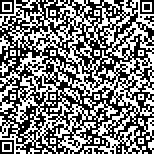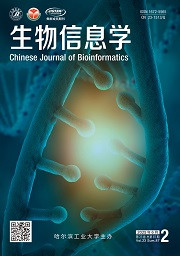| 引用本文: | 张雯,张森,刘珊,宋俊科,杜冠华.基于疾病与活性化合物靶点网络构建的异鼠李素抗缺血性神经损伤作用评价与验证研究[J].生物信息学,2023,21(1):20-28. |
| ZHANG Wen,ZHANG Sen,LIU Shan,SONG Junke,DU Guanhua.Evaluation and verification of effect of isorhamnetin against ischemic nerve injury based on network of disease and active compound targets[J].Chinese Journal of Bioinformatics,2023,21(1):20-28. |
|
| |
|
|
| 本文已被:浏览 1032次 下载 825次 |

码上扫一扫! |
|
|
| 基于疾病与活性化合物靶点网络构建的异鼠李素抗缺血性神经损伤作用评价与验证研究 |
|
张雯,张森,刘珊,宋俊科,杜冠华
|
|
(中国医学科学院北京协和医学院药物研究所,药物靶点研究与新药筛选北京市重点实验室,北京 100050)
|
|
| 摘要: |
| 基于网络药理学与分子对接探讨异鼠李素对缺血性神经损伤的治疗作用。采用ChEMBL、SwissTargetPrediction、DrugBank、STITCH及BindingDB数据库检索异鼠李素药理学靶点,应用DisGeNET、GenCLiP及CTD数据库检索缺血性神经损伤的疾病靶点,取交集作为异鼠李素对缺血性神经损伤的治疗靶点,并进行表型分析。将交集靶点导入STRING构建蛋白互作网络,使用Network analyser进行拓扑分析,同时应用MODE构建功能模块,并基于ClueGo对功能模块进行分析。之后应用DAVID数据库对治疗靶点进行GO及KEGG富集分析。利用Discovery Studio评价异鼠李素与核心靶点的结合活性,最后建立OGD/R损伤PC12细胞模型,采用MTT和LDH法检测细胞活力,Western blot法对AKT1、IL6和MMP2的表达进行检测。异鼠李素通过50个缺血性神经损伤相关靶点,调控细胞凋亡、转录、蛋白质磷酸化、炎症反应等生物学过程,干预PI3K-AKT信号通路、HIF-1信号通路、雌激素信号通路、肿瘤坏死因子信号通路、FoxO信号通路等多条途径发挥抗缺血性神经损伤的作用。初步阐释异鼠李素治疗缺血性神经损伤的作用,涉及多靶点、多通路,为进一步探究其药理学活性奠定理论基础。 |
| 关键词: 缺血性神经损伤 异鼠李素 网络药理学 分子对接 |
| DOI:10.12113/202110016 |
| 分类号:R96 |
| 文献标识码:A |
| 基金项目:国家重点研发计划项目(No.2020YFC2008302);国家自然科学基金项目(No.82004071). |
|
| Evaluation and verification of effect of isorhamnetin against ischemic nerve injury based on network of disease and active compound targets |
|
ZHANG Wen, ZHANG Sen, LIU Shan, SONG Junke, DU Guanhua
|
|
(Beijing Key Laboratory of Drug Target Identification and Drug Screening, Institute of Materia Medica, Chinese Academy of Medical Sciences and Peking Union Medical College, Beijing 100050, China)
|
| Abstract: |
| On the basis of network pharmacology and molecular docking, the therapeutic effect of isorhamnetin on ischemic nerve injury was explored. ChEMBL, SwissTargetPrediction, DrugBank, STITCH, and BindingDB databases were used to search for isorhamnetin pharmacological targets, and DisGeNET, GenCLiP, and CTD databases were used to search for disease targets of ischemic nerve injury. The intersection of these targets was taken to obtain the treatment targets of isorhamnetin ogainst ischemic nerve injury,and phenotype analysis was conducted. The intersection target was introduced into STRING to construct a protein interaction network. Network analyser was used for topological analysis. MODE was used to construct functional modules, and the functional modules were analyzed based on ClueGo. Then, the DAVID database was used for GO and KEGG enrichment analyses. Discovery Studio was used to evaluate the binding activity of isorhamnetin to the core target, and finally the OGD/R damaged PC12 cell model was established. The cell viability was detected by MTT and LDH methods, and the expression of AKT1, IL6, and MMP2 was detected by Western blot. Results show that isorhamnetin regulated cell apoptosis, transcription, protein phosphorylation, inflammation, and other biological processes through 50 ischemic nerve injury-related targets, and interfered with PI3K-AKT signaling pathway, HIF-1 signaling pathway, estrogen signaling pathway, tumor necrosis factor signaling pathway, FoxO signaling pathway, and other pathways,which played a role in resisting ischemic nerve injury. Preliminary explanation of the effect of isorhamnetin in the treatment of ischemic nerve injury involves multiple targets and multiple pathways, laying a theoretical foundation for further exploration of its pharmacological activity. |
| Key words: Ischemic nerve injury Isorhamnetin Network pharmacology Molecular docking |
|
|
|
|






